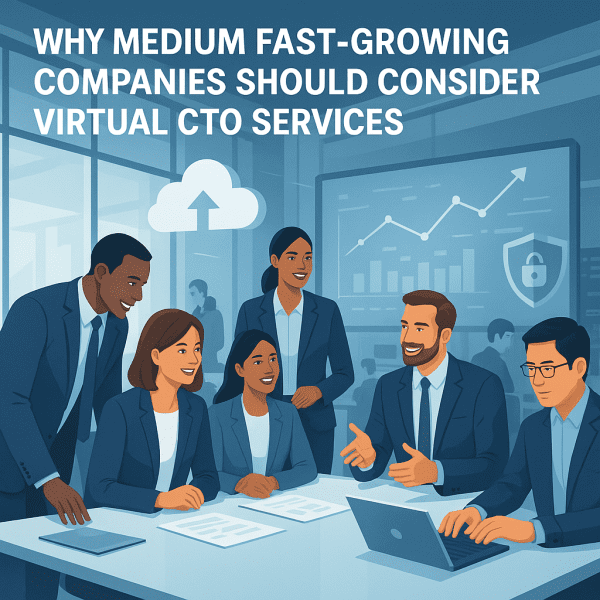For medium-sized, fast-growing companies, keeping technology aligned with rapid business growth is a constant challenge. You likely have a managed service provider (MSP) or internal IT staff handling daily operations like network maintenance or software updates. But operational IT support alone often lacks the strategic vision needed to drive long-term growth.

Virtual CTO services offer a flexible, cost-effective way to access high-level tech leadership, complementing your existing IT setup. Here’s why medium fast-growing companies should consider a virtual CTO to stay competitive.
1. Strategic Leadership to Complement Operational IT
Your MSP or internal IT team is great at keeping systems running—managing servers, troubleshooting issues, or maintaining networks. However, strategic decisions, such as building a scalable tech roadmap or prioritising investments, require C-level expertise. A virtual CTO provides this without the $260,000+ annual salary of a full-time CTO. A virtual CTO can:
- Develop a technology strategy to support expansion into new markets or product lines.
- Optimize your cloud infrastructure for cost-efficiency and performance.
- Guide digital transformation to ensure your business stays ahead of competitors.
This allows your MSP or IT staff to focus on day-to-day tasks while the virtual CTO drives your long-term vision that is aligned to your business strategy, goals and objectives.
2. Cost-Effective Expertise for Medium Businesses
Medium fast-growing companies often balance tight budgets with ambitious growth goals. Hiring a full-time CTO comes with high salaries, benefits, and onboarding costs, which can strain resources. Virtual CTO services deliver the same strategic expertise at less cost, tailored to your needs—whether for a specific project or ongoing guidance.
For example, a medium-sized e-commerce business scaling from 50 to 150 employees can use a virtual CTO to streamline its tech stack, freeing up budget for marketing or hiring. This cost efficiency fuels growth without financial strain.
3. Seamless Collaboration with Your MSP or IT Team
A virtual CTO doesn’t replace your MSP or internal IT staff—it enhances their work. While your IT team or MSP handles operational tasks like software patches or helpdesk support, a virtual CTO focuses on strategy, ensuring technology aligns with business goals.
For instance, if your MSP manages cloud servers, a virtual CTO can assess whether the setup is cost-effective or scalable for future growth. They can also oversee vendor contracts to ensure your MSP delivers maximum value, avoiding inefficiencies or redundancies.
4. Driving Digital Transformation
Medium fast-growing companies face pressure to modernise—whether adopting AI, upgrading legacy systems, or enhancing customer platforms. Your MSP or IT staff may lack the time or expertise to lead complex transformations. A virtual CTO brings specialised knowledge to execute these projects efficiently.
Consider a manufacturing firm expanding its IoT capabilities. A virtual CTO can select the right platforms, oversee integration, and ensure scalability, all while your IT team keeps operations running smoothly. This keeps your business competitive without overburdening your staff.
5. Unbiased, Vendor-Neutral Advice
With an MSP or internal IT team, you may encounter recommendations tied to specific vendors or familiar systems. A virtual CTO offers vendor-neutral guidance, ensuring technology decisions align with your long-term goals. They evaluate solutions based on your unique needs, not vendor partnerships or existing setups.
This objectivity can save thousands by avoiding unnecessary software purchases or failed implementations—critical for medium businesses where every dollar counts.
6. Strengthening Cybersecurity and Compliance
As medium companies grow, they become bigger targets for cyber threats, and compliance with regulations (e.g., GDPR, HIPAA) becomes essential. While MSPs often handle basic security, they may not have the expertise for a comprehensive cybersecurity strategy. A virtual CTO assesses risks, implements robust protocols, and ensures compliance, protecting your business and reputation.
For example, a medium-sized healthcare tech firm can rely on a virtual CTO to align systems with HIPAA requirements, complementing the MSP’s operational security measures. This builds customer trust and reduces risk.
7. Access to Specialised Expertise
Virtual CTOs often bring a network of specialists, from cloud architects to cybersecurity experts, giving your business access to top talent without hiring full-time staff. Need a one-off AI integration or a temporary DevOps boost? A virtual CTO can tap their network to deliver solutions quickly, keeping your growth on track.
8. Flexibility for Your Growth Stage
Medium fast-growing companies evolve rapidly, from launching new products to preparing for funding rounds. A virtual CTO adapts to your needs—whether it’s a three-month cloud migration project or ongoing strategic oversight. This flexibility ensures you only pay for what you need, unlike a full-time CTO commitment.
Is a Virtual CTO Right for Your Business?

If your medium fast-growing company has an MSP or internal IT staff but lacks strategic tech leadership, a virtual CTO is the perfect solution. They complement your existing team, drive digital transformation, and provide cost-effective expertise to fuel growth. Whether you’re scaling operations, securing systems, or planning expansion, a virtual CTO ensures your technology keeps pace with your ambitions.
Ready to elevate your tech strategy? Contact us today for a free consult and discover how our virtual CTO services can accelerate your growth.


